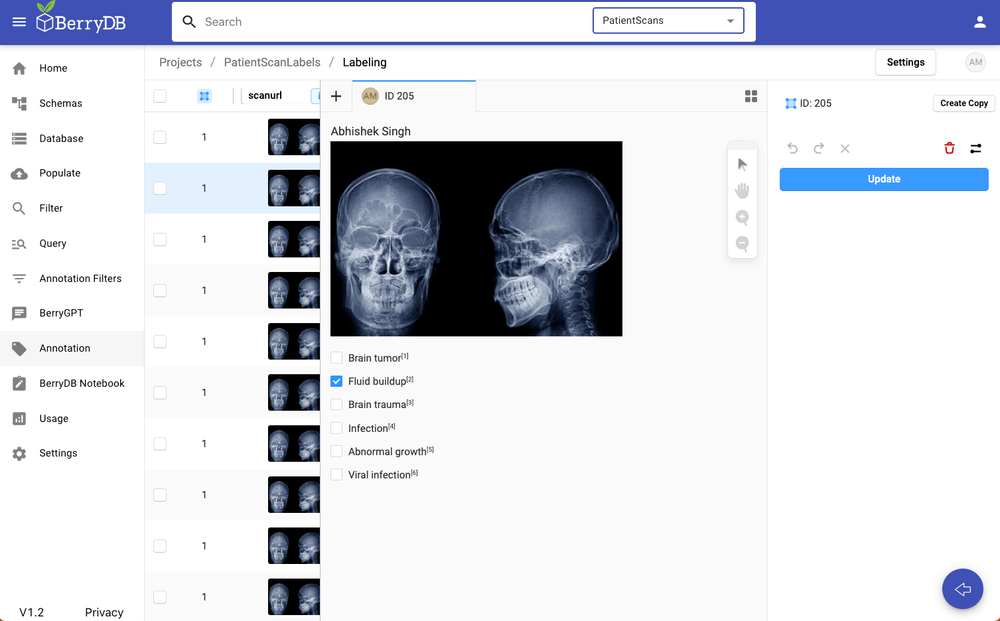In healthcare and medical imaging applications, users need to manage a large amount of unstructured data including patient medical history (text), X-rays or CT scans (images )and videos. BerryDB provides a scalable back end technology to handle unstructured data and build these applications. This article describes the high level features and the benefits of using a native unstructured database.
A truly dynamic schema to model your data: BerryDB provides schema modeling capability that supports embedding of image, audio, video, text data types. Schema is modeled using JSON and supports dynamically changing the underlying data structure without impacting the application. Users can add custom fields and change schema without impacting your app or interoperability.
BerryDB is a JSON native database users can model the patient and patient observation data using FHIR standard so you can interoperate with external vendors and achieve compliance and compatibility

Understand the unstructured data and enrich data in-place: Use AI/ML models to extract semantic information from the unstructured data. BerryDB supports ability to extract semantic knowledge from the underlying unstructured data using computer vision, NLP algorithns. Users can plug-in their own AI/ML models used to process image, text, video and enhance the underlying data.
In this example, an image classification annotation widget is used to annotate a CT scan automatically. Users can modify the annotations before saving it to the database

A unified search index to search through all types of data:
Once the data is populated, BerryDB provides a unified search mechanism to search through all types of data
- Database index - Search through database fields. For example, "Give me a list of patients born in January"
- Full text search - Search through embedded text. For example, "Show all patient records that contain the word hypertension in their history"
- Annotation/semantic search - Search through semantic knowledge. For example, "Show all patients with Brain tumor is their CT scan" or "Show patients who have similar CT scan as this particular patient"
- English language search - BerryDB provides English language search through the entire database consisting of database fields, embedded text and unstructured data
It also supports combining different search options into a single query. For example, "Give a list of patients born in January who have a brain tumor in their CT scans and their medical history has hypertension"
BerryDB API. BerryDB provides an API to access to the data. Users can access the data using Python or Javascript API. Here's a cookbook example - this is a foundational notebook that demonstrates how to get started with BerryDB API. It shows how to connect to BerryDB, access the database, read and write records
https://colab.research.google.com/drive/1ST2uoDhH0xk02yOONpxmM0Ct2Y65ODVv
Chat interface to BerryDB. BerryDB has a built-in vector database. It embeds all the records in the database into a vector store. As a result, users can use plain English language to search through text and unstructured data.

